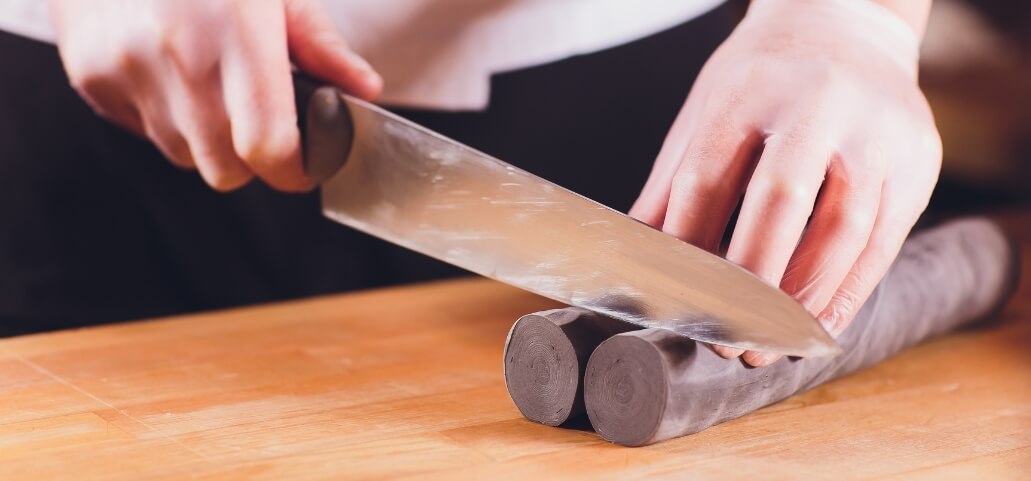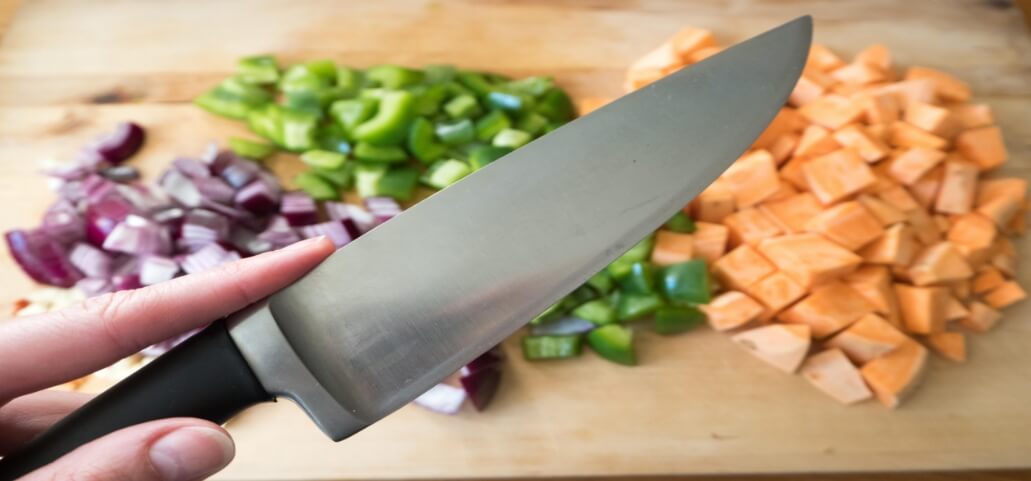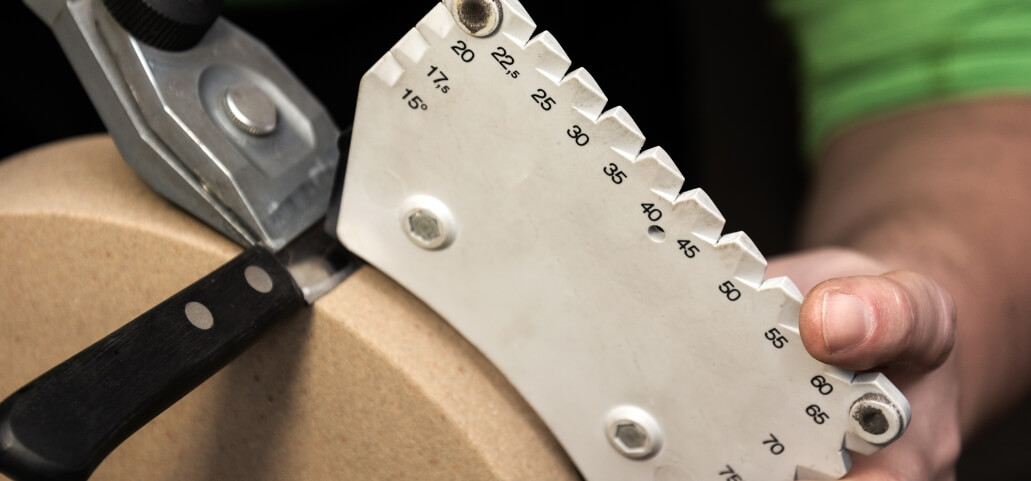Knowing how to sharpen ceramic knives is crucial for preserving their cutting efficiency. Ceramic knives are prized for their exceptional sharpness and durability, but even these high-quality tools need maintenance. Unlike metal knives, ceramic knives require special techniques and tools to sharpen properly. In this guide, we’ll explore the best methods to sharpen ceramic knives, ensuring they remain as precise and effective as when you first bought them. So let’s dive in and explore how to sharpen ceramic knives.
Understanding Ceramic Knives

Before we delve into the sharpening process, it’s important to understand what ceramic knives are and how they differ from traditional metal knives. Ceramic knives are made from zirconium oxide, a high-performance ceramic material that is extremely hard and resistant to wear. This gives them an incredibly sharp edge that can retain their cutting ability for a long time.
Ceramic knives offer several benefits over metal blades:
- They are less heavy.
- They rust or corrode in no way.
- They do not need frequent sharpening.
However, the downside of using ceramic knives is their brittleness. Dropping them on a hard surface or using them to cut through hard materials can result in chipping or breaking. Because of this, it’s crucial to handle and keep ceramic blades carefully.
Why Sharpening Ceramic Knives is Different

Sharpening ceramic knives is a specialized process due to their unique properties. Unlike metal knives that can be sharpened with traditional knife sharpeners, ceramic knives require specific tools and techniques to maintain their sharpness.
Ceramic knives cannot be sharpened on a honing steel or stone, as these materials are not hard enough to grind down the blade’s edge. Instead, diamond-coated rods or wheels are needed to effectively sharpen ceramic blades.
Tools Needed for Sharpening Ceramic Knives
- Diamond rod sharpener or diamond wheel sharpener
- Soft cloth for cleaning the knife
- Cutting board made of plastic or wood (avoid metal)
- Flat surface to place the sharpening tool on
- Electric Knife Sharpeners Designed for Ceramic Knives
Step-by-Step Guide to Sharpening Ceramic Knives

Sharpening ceramic knives can be a bit challenging due to their hardness and brittleness compared to traditional steel knives. But you can maintain your ceramic knives in excellent shape if you use the correct equipment and methods. Here is the detailed method:
Method 1: Using a Diamond Rod Sharpener
One of the most common methods for sharpening a ceramic knife is by using a diamond rod sharpener. This tool is specifically designed to sharpen ceramic knives without damaging the blade.
- Step 1: Prepare the Knife: Before beginning the sharpening process, make sure your knife is clean and dry. Use a soft cloth to wipe off any remaining food particles or dirt from the blade.
- Step 2: Position the Rod Sharpener: Hold the rod sharpener in one hand and place it on a flat surface. Prior to sharpening, ensure that it is stable and will not move.
- Step 3: Start Sharpening: Holding the handle of your ceramic knife with your other hand, gently run the blade along the diamond-coated rod at a 20-degree angle. Cover the whole edge of the blade with minimal pressure.
- Step 4: Repeat the Process: Holding the angle and pressure evenly, repeat the operation on the other side of the blade as well. It may take several passes before your knife is sharp again.
- Step 5: Test for Sharpness: Once you’ve completed sharpening, rub your finger down the edge of the blade to make sure it’s sharp. If it feels smooth without any nicks or rough spots, your knife should be ready to use.
Method 2: Using a Diamond Wheel Sharpener
Another effective way to sharpen ceramic knives is by using a diamond wheel sharpener. This method is similar to using a rod sharpener, but instead of running the blade along a rod, it’s run along a rotating diamond-coated wheel.
- Step 1: Prepare the Knife: As with the rod sharpener method, make sure your knife is clean and dry before starting.
- Step 2: Position the Wheel Sharpener: Place the wheel sharpener on a flat surface and make sure it’s stable. Some models may have suction cups on their base for added stability.
- Step 3: Sharpen the Knife: Holding the handle of your ceramic knife, place the blade against the rotating diamond wheel at a 20-degree angle. Move the knife along the length of the wheel, applying light pressure and covering the entire edge of the blade.
- Step 4: Repeat on Both Sides: Keep the angle constant and apply equal pressure as you repeat the operation on both sides of the blade. To get a sharp edge, you might have to make numerous passes.
- Step 5: Test for Sharpness: Once finished, test for sharpness by running your finger along the edge. If it’s smooth and free of nicks, your knife should be ready to use.
Method 3: Using an Electric Knife Sharpener
Electric knife sharpeners designed specifically for ceramic knives are also available on the market. These appliances use diamond wheels or rods to effectively sharpen ceramic blades, making it a quick and easy option for maintaining your knives.
- Step 1: Prepare the Knife: Make sure your knife is clean and dry before beginning the process.
- Step 2: Turn on the Electric Sharpener: Turn on the sharpener and select the setting designed for ceramic knives.
- Step 3: Sharpening Process: Holding the handle of your knife, slowly run it through the designated slot in the sharpener. The electric sharpener will do the rest of the work for you.
- Step 4: Repeat if Needed: Depending on the sharpness of your knife, you may need to run it through the sharpener multiple times.
- Step 5: Test for Sharpness: Once finished, test for sharpness by running your finger along the edge. If it’s smooth and free of nicks, your knife should be ready to use.
Tips for Maintaining Your Ceramic Knives

Once you’ve successfully sharpened your ceramic knives, there are a few tips to keep in mind to maintain their sharpness for as long as possible:
- Slice through soft materials instead of glass or stone.
- Wash your knives by hand rather than placing them in the dishwasher.
- Use a plastic or wooden cutting board instead of metal.
By following these tips and regularly sharpening your ceramic knives when needed, you can ensure they remain in top condition and provide excellent performance for all your cutting needs.
Common Mistakes to Avoid When Sharpening Ceramic Knives
While sharpening ceramic knives may seem intimidating at first, it’s a simple process when done correctly. On the other hand, to keep your knife in pristine condition, you need steer clear of these typical error:
- Using the wrong type of sharpener: As mentioned earlier, only use diamond-coated sharpeners specifically designed for ceramic knives.
- Applying too much pressure: Applying too much pressure while sharpening can cause the blade to chip or break.
- Sharpening at the wrong angle: The ideal angle for sharpening ceramic knives is between 15-20 degrees. Going higher or lower can result in an uneven edge.
- Over-sharpening: Sharpening your knife too often or for too long can also cause damage to the blade. Only sharpen when needed and follow the recommended number of passes for each method.
By avoiding these common missteps, you can keep your ceramic knives sharp and damage-free. Next time you use your ceramic knife, remember to give it some TLC with these sharpening methods.
Conclusion
Learning how to sharpen ceramic knives is essential for maintaining their sharpness and prolonging their lifespan. By following the methods outlined in this guide, you can keep your ceramic knives in top shape and continue enjoying their precision cutting abilities. Remember to always handle and store them carefully, and use the right tools when it’s time for a touch-up. Ceramic knives, if handled with care, may last for many years in the kitchen.
Frequently Asked Questions
Q1: How to sharpen ceramic knives effectively?
Answer: To sharpen ceramic knives effectively, you can use a diamond rod or wheel sharpener specifically designed for ceramic blades. Electric knife sharpeners also work well for maintaining the sharpness of ceramic knives.
Q2: Can I use a regular knife sharpener for ceramic knives?
Answer: No, regular knife sharpeners designed for steel blades are not suitable for ceramic knives. Use diamond sharpeners specifically made for ceramic blades.
Q3: Are ceramic knives dishwashers safe?
Answer: It’s best to hand wash ceramic knives. Dishwashers can damage the blade and handle due to high temperatures and harsh detergents.
Q4: What should I do with my ceramic knife chips?
Answer: If a ceramic knife chips, you can try to smooth out minor chips using a fine diamond stone. For significant damage, consider professional sharpening services.
Q5: How can I tell if my ceramic knife is sharp enough?
Answer: A sharp ceramic knife should easily slice through paper or soft fruits without tearing. Regularly test the sharpness to ensure optimal performance.
Disclaimer: Sharpening ceramic knives can be dangerous if not done correctly. Handle sharp things with extreme care and always adhere to all safety protocols. Ask an expert for help sharpening your knife if you’re not sure what you’re doing. You should not take this guidance as professional advice; it is just for informative reasons. Remember to always handle sharp objects with care and always read and follow instructions provided by the manufacturer.
Personal Experience: As a chef, I have used ceramic knives for years and have found that keeping them well-sharpened is essential for efficient and precise cutting. After trying various sharpening methods, I have found using an electric sharpener designed for ceramic blades to be the most effective and time-saving option. However, it’s important to remember to only use the designated setting for ceramic knives to avoid damage. According to the tips and precautions outlined above, you can easily maintain your ceramic knives at home.
Why Trust Our Content?
Professionals in the subject conduct extensive research and write all of our articles. We strive to provide accurate and up-to-date information to our readers, backed by personal experience and professional knowledge. Our goal is to provide helpful guides that can be trusted for practical use. We value your trust and strive to deliver reliable content on various topics related to home and kitchen care. Your continued patronage as your preferred provider of sharpening services is much appreciated! Happy cooking!

